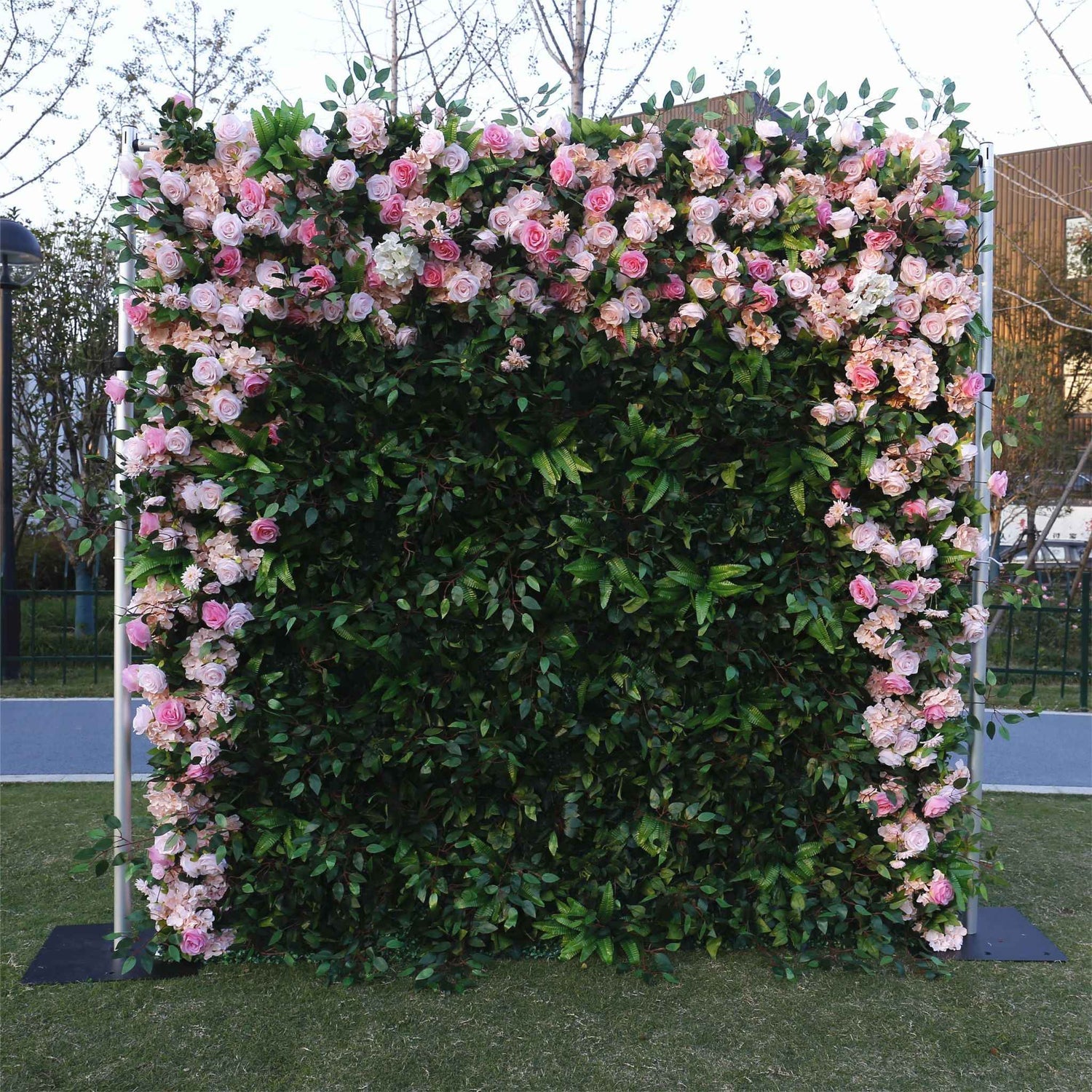
Are DIY Table Runners Worth the Time and Effort?
When it comes to home décor, a table runner can be an elegant yet practical way to enhance your dining experience. Many people are now choosing to create their own DIY table runners as a fun and personal project. While store-bought options are convenient, the satisfaction of creating something unique and tailored to your style can be hard to beat. Aliflowers, a leading flower wall manufacturer, believes in the beauty of DIY projects and offers insights into whether making your own table runner is truly worth the time and effort.
1. What Is a DIY Table Runner?
A table runner is a long piece of fabric that is placed across the center of a table, often used as a decorative element. It serves as a backdrop for plates, cutlery, and other items on the table while also adding a stylish and coordinated aesthetic. DIY table runners allow for complete creative control—choosing the fabric, color scheme, length, and embellishments that match your vision.
Whether it's a simple linen runner or an intricately designed piece with lace, embroidery, or even floral accents, the options are nearly endless when you create it yourself. For those who love crafts and personalization, DIY table runners provide a satisfying way to reflect individual style.
2. Benefits of DIY Table Runners
Making your own table runner can offer several advantages that you may not get from buying a ready-made one.
- Customization to Your Style
The most obvious benefit of creating your own table runner is the ability to customize it to your exact preferences. You can select fabrics, colors, and patterns that perfectly match your dining room or event theme. Whether you're looking for something classic, modern, bohemian, or rustic, a DIY table runner allows you to choose materials that suit your personal style.
For example, if you're hosting a wedding or a special celebration, you can incorporate seasonal flowers or thematic elements into your design. Aliflowers provides beautiful floral designs that can be incorporated into DIY projects to make them stand out.
- Cost-Effectiveness
While it might seem like buying a table runner is the more affordable option, DIY can actually be more cost-effective, especially if you already have some crafting materials at home. Fabrics can be purchased in bulk or on sale, and with minimal tools—such as scissors, a sewing machine, and thread—you can create a table runner that costs a fraction of a store-bought version, but is far more personalized and unique.
- Satisfaction and Accomplishment
There is a sense of pride and satisfaction that comes from making something with your own hands. For those who enjoy hands-on projects, a DIY table runner is a fun and rewarding activity that lets you express your creativity. Plus, it can become a meaningful part of your home décor, made with your own touch.
- Perfect for Special Occasions and Holidays
DIY table runners are perfect for special occasions, as they allow you to incorporate seasonal elements that fit the occasion. Whether it’s Christmas, Thanksgiving, or a birthday celebration, you can design your table runner to align with the holiday theme. For instance, you could add delicate fall leaves, bright florals, or even small fairy lights to create a magical atmosphere.

3. Materials and Techniques for DIY Table Runners
Creating a DIY table runner is easier than it might seem, especially with the wide variety of materials available today. Here’s a breakdown of the materials and techniques that can be used to make a beautiful table runner.
- Choosing the Fabric
The first step in any table runner project is selecting the right fabric. The material you choose will determine the overall look, feel, and durability of your runner. Some popular fabric options include:
- Cotton: Easy to work with and versatile, cotton is great for everyday use and casual settings.
- Linen: Perfect for a more rustic or formal look, linen offers a textured feel and sophisticated appearance.
- Silk or Satin: Ideal for elegant events like weddings or dinner parties, silk and satin add a luxurious touch.
- Jute or Burlap: These materials are great for a natural, rustic aesthetic and are perfect for country-themed décor.
- Incorporating Embellishments
One of the most fun aspects of DIY table runners is the opportunity to add embellishments. You can make your table runner as simple or as elaborate as you like. Some popular embellishments include:
- Lace: Adds a delicate, vintage-inspired touch to any table runner.
- Embroidery: Whether hand-stitched or machine-made, embroidery can be used to personalize your table runner with names, dates, or patterns.
- Flowers: Fresh or artificial flowers, like those from Aliflowers, can be sewn or glued onto the fabric to add texture, color, and a romantic feel to your design.
- Ribbons and Trimmings: Satin ribbons, beads, or sequins can be used to give your table runner an extra flair.
- Sewing and Assembly Techniques
Once you’ve chosen your fabric and embellishments, it’s time to assemble your runner. Basic sewing skills will be enough for most designs. You’ll need to measure and cut your fabric to the desired length and width, then hem the edges to prevent fraying.
- Simple Hemming: For a clean, polished look, simply fold the edges of the fabric and sew them down.
- Quilted Designs: For a more complex project, you can quilt the fabric or add multiple layers for depth and texture.
- Adding Flowers: If using fabric flowers, such as those from Aliflowers, sew them along the length of the runner to create a beautiful floral design that ties the piece together.
4. DIY Table Runner Ideas for Different Occasions
Whether you’re celebrating a holiday, hosting a dinner party, or just looking to add a personal touch to your everyday meals, there are endless possibilities when it comes to designing a DIY table runner. Here are some ideas for different occasions:
- Rustic Farmhouse Table Runner
For a laid-back and cozy look, a burlap or linen table runner with lace details and some floral accents works wonders. You can also add some mason jars or wooden candleholders for a rustic touch.
- Holiday-Themed Table Runner
For holidays like Christmas or Thanksgiving, create a runner using seasonal fabric—such as red and green plaid for Christmas or a rich gold and brown fabric for Thanksgiving. Add embellishments like small pinecones, holly leaves, or pumpkins for a festive look.
- Romantic Wedding Table Runner
A wedding table runner can be incredibly elegant and romantic. Opt for a soft, luxurious fabric like satin or silk in soft hues such as ivory or blush pink. Add floral arrangements from Aliflowers for a graceful touch that complements the overall wedding décor.
- Bohemian Chic Table Runner
For a boho vibe, use colorful fabrics like tie-dye or printed cotton with fringe along the edges. Embellish with tassels, beads, and layered flowers to give it an earthy, carefree style.
5. Time and Effort Considerations for DIY Table Runners
While the benefits of a DIY table runner are clear, it’s also important to consider the time and effort involved. Creating a table runner from scratch can take several hours, especially if you plan on adding detailed embellishments like embroidery or floral designs. For those who have the time and enjoy crafting, this will likely be a fun and rewarding project. However, for those with tight schedules, it’s worth considering if the time invested will be worth the end result compared to purchasing a pre-made table runner.
In conclusion, DIY table runners offer a wonderful opportunity to personalize your dining space with creativity and style. By choosing the right materials, techniques, and embellishments, anyone can create a beautiful and functional table runner that complements their home décor or special event. Whether you’re looking to craft something for daily use or a grand occasion, DIY table runners allow you to infuse your personality and creativity into your space.
Compartir
